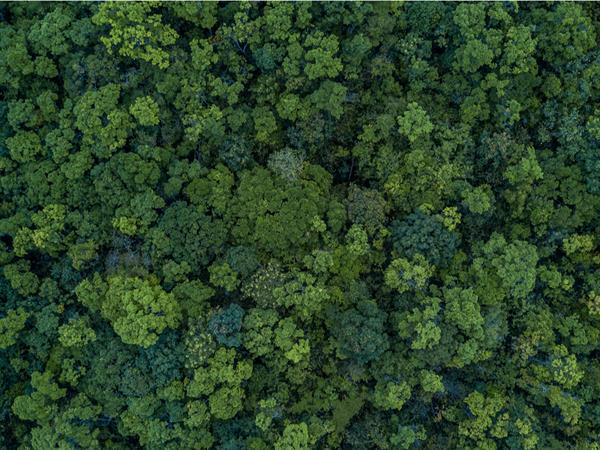
PUMPA - SMART LEARNING
எங்கள் ஆசிரியர்களுடன் 1-ஆன்-1 ஆலோசனை நேரத்தைப் பெறுங்கள். டாப்பர் ஆவதற்கு நாங்கள் பயிற்சி அளிப்போம்
Book Free DemoTropical forests are common in areas around the equator, i.e. between \(10° N\ and\ 10° S\) latitude at elevations below\(\ 3,000\) feet. The tropical forest biome has several sub-biomes, including evergreen rainforest, seasonal deciduous forest, tropical cloud forest, and mangrove forest. These sub-biomes develop due to changes in seasonal patterns of rainfall, elevation and substrate.
Tropical forests are the Earth’s most complex biome in terms of both structure and species diversity. It has the highest biodiversity and primary productivity of any of the terrestrial biomes due to abundant precipitation and year-round warmth. Tropical forest regions get rainfall of over \(250cm\) a year.

Aerial view of tropical forest
The Amazon basin, Congo basin and Indonesian islands are the major regions of the tropical forest biome. These regions hold very thick forests and therefore have great economic importance. Human settlements are found scattered here. They sustain their livelihood through primary activities like food gathering, fishing, lumbering and shifting cultivation. Due to the humid nature of this biome, people get afflicted with tropical diseases like malaria, yellow fever etc.
Flora: Rubber, bamboo, ebony, mahogany, dyewood etc.
Fauna: Bats, pheasants, jaguars, elephants, monkeys, poison dart Frog, okapi etc.
Fauna: Bats, pheasants, jaguars, elephants, monkeys, poison dart Frog, okapi etc.
The U.S. National Cancer Institute has identified that about 70% of the plants used to treat cancer are found only in rain forests. E.g. Lapacho.